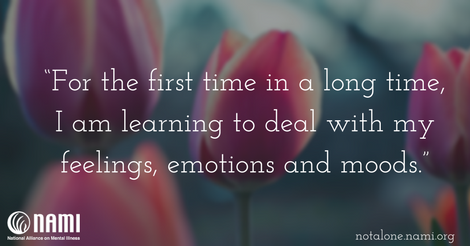Exercise For Mental Health: 8 Keys To Get And Stay Moving
Mental illness has deeply impacted my life. I have experienced the flooding of anxiety and the drowning of depression. I have waged, and won, several battles with postpartum depression and been through loss and grief. I know how painful it can be to find oneself in the throes of mental illness and how helpless it can feel when a loved one is caught in its grasp. As a clinical psychologist, I have witnessed the sting of mental illness and the struggle to find healing. People come desperate to learn the tools that can break the chains of mental and emotional symptoms. Too often, individuals and their friends and family are ready to seek and find help, only to find barriers halting their progress.
Barriers To Mental Illness Treatment
An astonishing 60% of American adults, and almost half of children ages 8–15, receive no treatment for their mental illness diagnoses. Though valid treatments—like mental health medications and psychotherapy—are available, too many people encounter barriers to treatment. This occurs for many reasons, but the most common are the stigma of mental illness and its treatments, like medication and therapy; the side effects of medication treatments; and the cost of long-term therapy or medical interventions.
Benefits Of Exercise For Mental Health
Exercise has been researched and validated for treating a variety of mental issues and mental health conditions, including depression, anxiety, eating disorders, bipolar disorders, schizophrenia, addictions, grief, relationship problems, dementia and personality disorders. Additionally, exercise alleviates such conditions as bad moods, stress, chronic pain and chronic illnesses.
Exercise is not only free from negative stigma, it is safe when done appropriately, with a doctor’s approval. Any side effects are ultimately positive, and even better, exercise is free of charge, easy to access and available for everyone. Exercise can be used as a stand-alone treatment for some mild-to-moderate conditions or, more effectively, in conjunction with other mental health treatments.
Like medicine in the treatment of mental illness, exercise can increase levels of serotonin, dopamine and norepinephrine in the brain. It improves and normalizes neurotransmitter levels, which ultimately helps us feel mentally healthy. Other important benefits include enhanced mood and energy; reduced stress; deeper relaxation; improved mental clarity, learning, insight, memory and cognitive functioning; enhanced intuition, creativity, assertiveness and enthusiasm for life; and improved social health and relationships, higher self-esteem and increased spiritual connection.
8 Keys To Mental Health Through Exercise
If exercise is so good for physical and mental health, why aren’t more of us exercising for mental health? Why aren’t medical and mental health practitioners not only recommending exercise but also showing us how to safely start and continue exercising for mental health? The following overview of my 8 Keys to Mental Health Through Exercise can help you, your loved ones and those who provide medical and mental health care tackle underlying beliefs about exercise, change exercise-related thinking, overcome barriers and implement an effective exercise program.
1. Heal Your Mind and Body with Exercise
If you struggle with a particular mental illness, exercise has specific abilities to help you, too. From calming the anxious mind to regulating mood swings in bipolar disorder, exercise may be the best thing we can do for mental, physical, emotional, social and spiritual well-being. To receive the benefits of exercise, however, we must first believe that exercise can heal body, mind and soul.
2. Improve Your Self-Esteem with Exercise
Exercise improves self-esteem, which is associated with greater mental health. Exercise has also been shown to increase self-confidence, self-efficacy, self-acceptance and self-concept. When we exercise, we feel more loving, positive and confident.
3. Exercise as a Family
Family has a big influence on how we perceive exercise and mental health. Family beliefs can either promote or impair mental health. Exercising as a family not only gets the entire family moving to reap the benefits of exercise but also models healthy beliefs about physical activity and improves family relationships.
4. Get Motivated
Motivation, or rather lack of it, is probably the biggest block to exercise for mental health. We know we should exercise. We may even want to exercise, but we often can’t make ourselves do it. Remember that motivation is a skill that can be learned and improved upon.
5. Change How You Think about Exercise
What thoughts do you have about exercise? What promotes physical activity? What holds you back? As we identify these thoughts, we can choose to change them. One tool for this is called a “thought record.” As we list our thoughts and feelings about exercise on a thought record, we have the power to question and change our thoughts. We can put new, healthier thoughts into our brains—thoughts like, “I know if I go for a walk, I will feel more energized and less depressed.”
6. Overcome Roadblocks
While exercising can be physically challenging, exercise is just as much, or even more, about mental fortitude. What are your biggest roadblocks to exercise? If you look carefully, you’ll see that almost all of them have to do with mental perceptions and beliefs. Lack of time or energy? Not being able to get to the gym? Perhaps you face the challenge of having young children, or a job that’s taking over your life. Whatever the roadblocks, you can overcome them as you acknowledge and challenge them.
7. Get FITT—Physically and Mentally
To stay with exercise for mental health, you must first build mental fortitude. That’s why I’ve waited until Key 7 to discuss how to set up an exercise program. The FITT Principle shows how. FITT stands for Frequency (how often you exercise), Intensity (how hard you exercise), Type (of exercise you’re doing) and Time (how long you exercise). Through FITT, you can create a tailored program for your unique needs.
8. Implement Your Vision and Flourish
Finally, we need a long-term vision of health and wellness to keep exercising for mental health for the rest of our lives. Exercise is beneficial at all ages and stages; as we look to the future, we find that by exercising for our mental health, we can help overcome mental illness and become who we are meant to be. We will flourish.
Christina G. Hibbert, Psy.D. is a clinical psychologist specializing in women’s mental health, motherhood, grief/loss, selfesteem and personal growth. She is the author of This Is How We Grow, Who Am I Without You? and 8 Keys to Mental Health Through Exercise , and host of the weekly series “Motherhood” on WebTalkRadio.net. For more on this topic, visit www. DrChristinaHibbert.com and www.Exercise4MentalHealth.com.
https://www.nami.org/Blogs/NAMI-Blog/May-2016/Exercise-for-Mental-Health-8-Keys-to-Get-and-Stay








